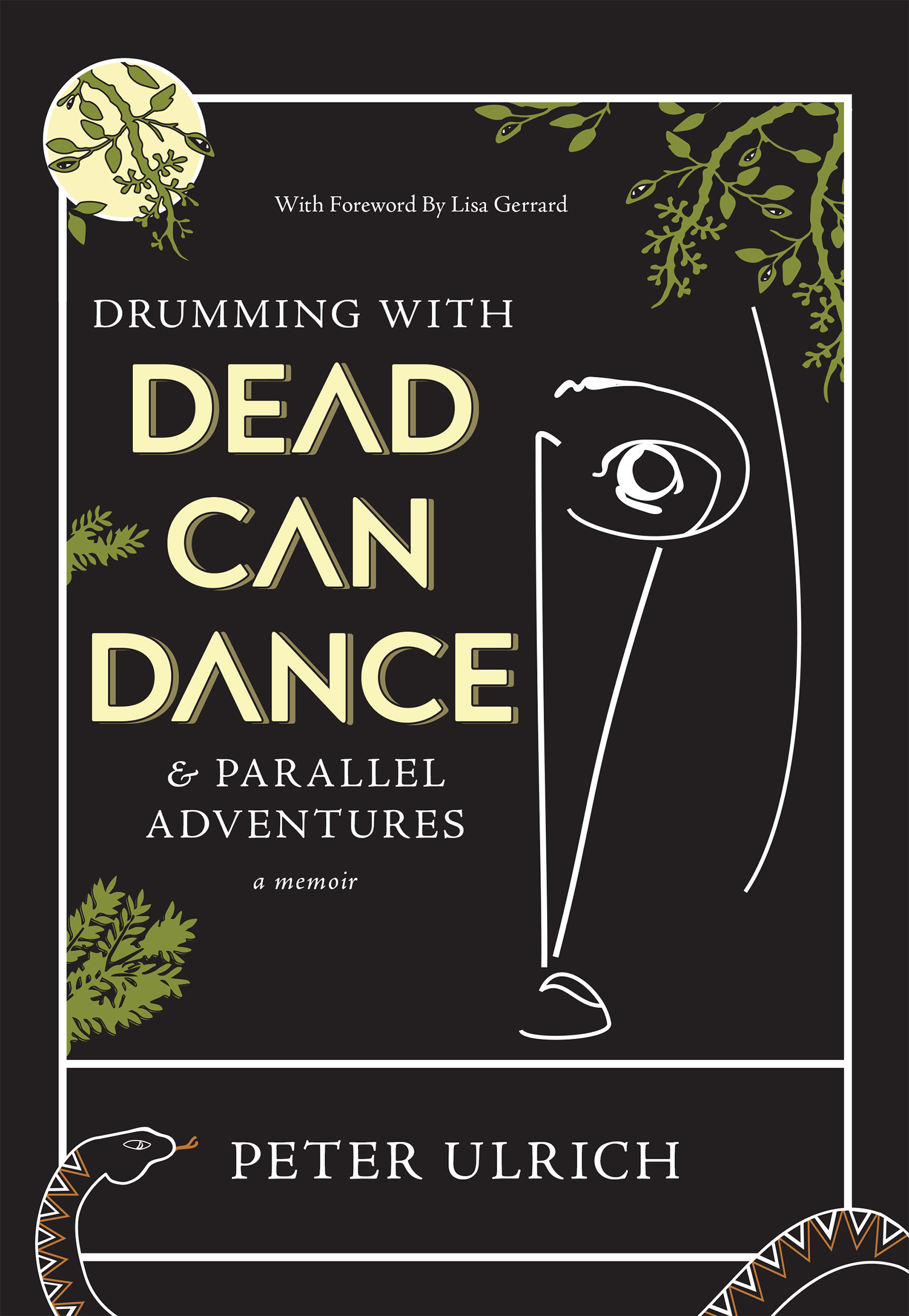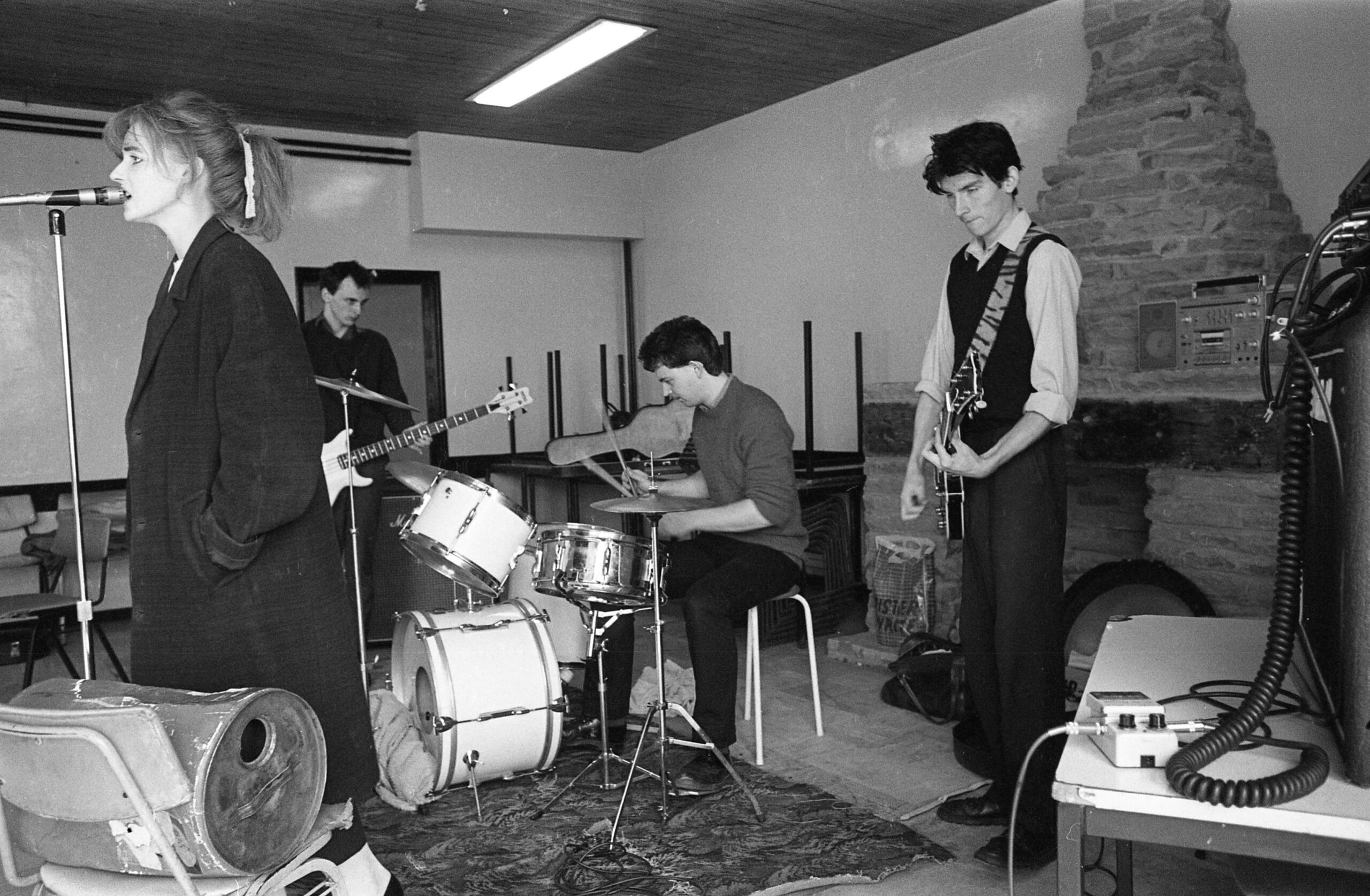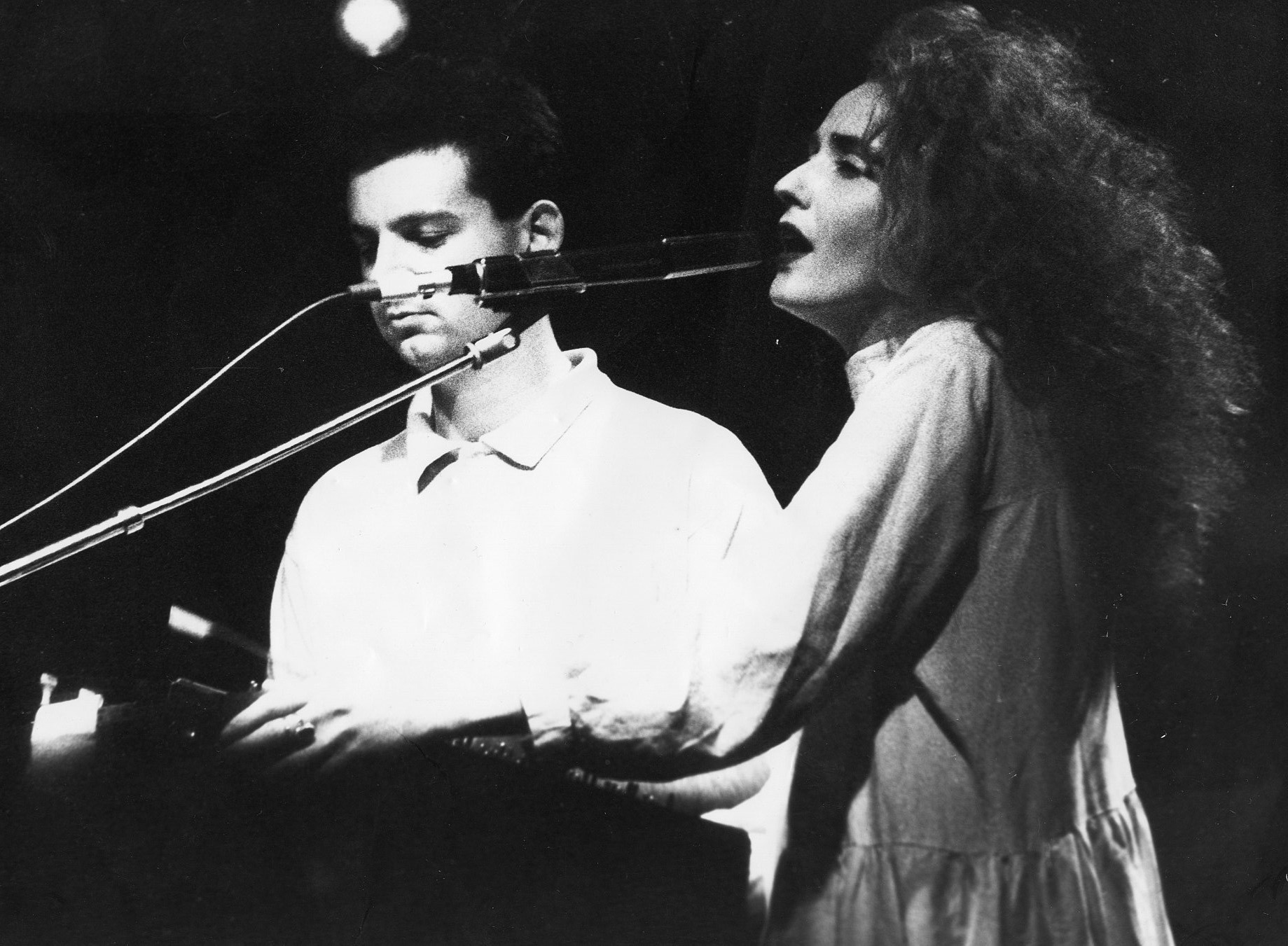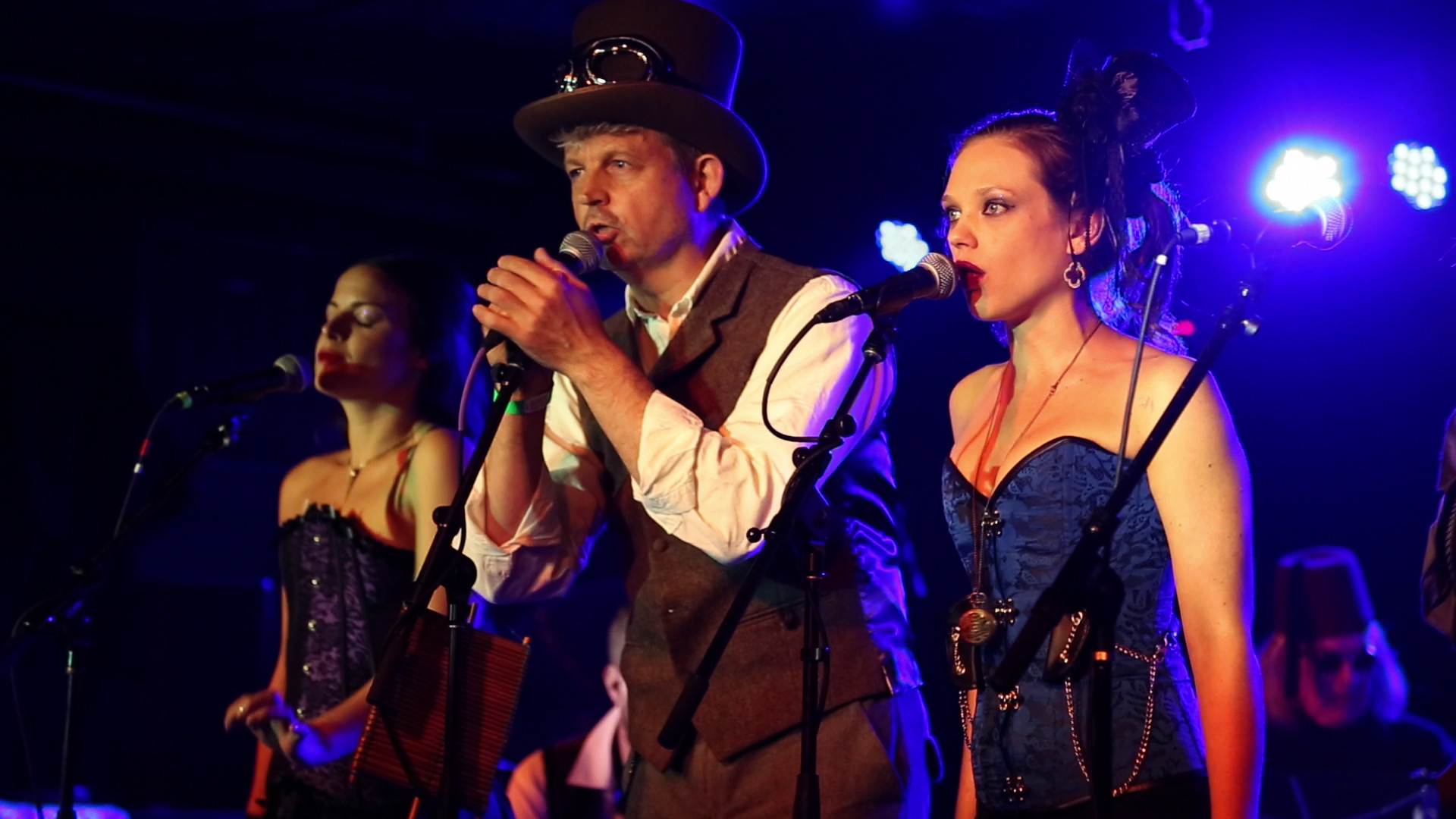Peter Ulrich, known for his distinctive drumming and percussion with the iconic Dead Can Dance Band, is set to release his memoir, “Drumming with Dead Can Dance & Parallel Adventures,” on November 15th through Red Hen Press. This highly anticipated book offers an intimate look into Ulrich’s experiences within the band throughout the 1980s, a pivotal era for the dead can dance band and the 4AD record label.
Beyond his central role in the dead can dance band, Ulrich’s memoir delves into his contributions to This Mortal Coil and his guest appearances on various other 4AD recordings, painting a comprehensive picture of his musical journey within this influential scene. Written with engaging detail, the book promises to satisfy the curiosity of fans eager to learn more about the inner workings of the dead can dance band, including insights into his solo projects and much more. This memoir is poised to be an essential read for anyone fascinated by the history of the dead can dance band and the broader landscape of alternative music.
 The front cover of “Drumming with Dead Can Dance & Parallel Adventures”, Peter Ulrich’s memoir about his time with the dead can dance band.
The front cover of “Drumming with Dead Can Dance & Parallel Adventures”, Peter Ulrich’s memoir about his time with the dead can dance band.
More Than Just Sex, Drugs, and Rock ‘n’ Roll: A Musician’s Perspective on the dead can dance band
In a revealing interview, Peter Ulrich discusses his memoir and provides a glimpse into the unique world of the dead can dance band. When asked if his book intentionally deviates from typical rock memoirs, Ulrich explains that his recollections are “simply dictated by what actually happened.” He emphasizes that the dead can dance band was never a conventional act, existing on the fringes of the rock scene and increasingly distancing themselves from its clichés.
While acknowledging the existence of compelling memoirs focused on the hedonistic aspects of the music industry, Ulrich clarifies that his book takes a different path. “Mine is more focused on how our musics developed and worked, the unopiated personalities of the protagonists, and a broader journey through music and the machinations of the music industry,” he states. This approach promises readers a deeper understanding of the creative processes and personal dynamics that shaped the dead can dance band‘s distinctive sound.
Quirky Anecdotes and Early Days: Humanizing the Myth of the dead can dance band
Despite their ethereal and often otherworldly music, the members of the dead can dance band were, at their core, ordinary people navigating everyday life. Ulrich shares an anecdote from a 1987 Sounds interview that highlighted the contrast between the band’s music and their reality – living in a council flat. This detail underscores that even artists creating such transcendent music still engage in mundane activities like “shop, clean and cook.”
Ulrich points out that many bands accumulate their most humorous and surprising stories during their early, pre-fame days. Lisa Gerrard’s foreword in the book echoes this sentiment, evoking memories of “beer-stained backstage carpets, grey skies and hunger.” These glimpses into the dead can dance band‘s formative years promise to add a layer of relatable humanity to the band’s often enigmatic image, offering readers a connection beyond the music itself.
Recollections and Shared Memories: Piecing Together the dead can dance band Story
Ulrich’s memoir is notable for its detailed recounting of events from the 1980s, a testament to his clear memory. He acknowledges instances where his recollections differ from those of Brendan Perry or Lisa Gerrard, highlighting the subjective nature of memory. To address this, Ulrich explains his efforts to “get a balance between our various memories,” aiming to present a cohesive narrative through collaboration.
His role in the early days of the dead can dance band extended beyond drumming to include part-management duties. This unique position provided him with access to valuable resources like “cash books, contracts, correspondence,” which aided in verifying facts and dates. This meticulous approach not only enhances the accuracy of the memoir but also offers readers an insider’s perspective on the logistical and business aspects of the dead can dance band‘s early career.
 Dead Can Dance rehearsal, Isle of Dogs, 1983, featuring the early lineup of the dead can dance band: (L-R) Lisa Gerrard, Paul Erikson, Peter Ulrich, and Brendan Perry. Photo by Jeffrey Earp.
Dead Can Dance rehearsal, Isle of Dogs, 1983, featuring the early lineup of the dead can dance band: (L-R) Lisa Gerrard, Paul Erikson, Peter Ulrich, and Brendan Perry. Photo by Jeffrey Earp.
Navigating Tensions and Creative Passion: The Gerrard-Perry Dynamic within the dead can dance band
The memoir addresses the well-documented creative tensions between Lisa Gerrard and Brendan Perry, describing “frequent and explosive arguments.” Ulrich approaches this sensitive topic with candor, stating that he doesn’t believe he’s revealing anything the pair haven’t previously discussed publicly. He emphasizes that they encouraged him to be honest and “tell it how it was.”
Ulrich is careful to balance these accounts of conflict with the “great strengths and positivity in their relationship,” acknowledging that their passionate disagreements were integral to the dead can dance band‘s creative process. He notes that both Gerrard and Perry reviewed his drafts, ensuring they were comfortable with the portrayal. This balanced perspective offers readers a nuanced understanding of the dynamic that fueled the dead can dance band‘s groundbreaking music.
Personal Vulnerability and Growth: Ulrich’s Journey Within the dead can dance band
Ulrich’s memoir isn’t solely focused on the external narrative of the dead can dance band; it also delves into his personal journey, including his “stage nerves and some early struggles with performance.” He expresses no hesitation in revealing these vulnerabilities, viewing them as an important part of his story and a testament to the supportive environment within the band.
He credits Gerrard and Perry for their belief in his potential, emphasizing that they valued his passion for their music over his initial technical proficiency. Their willingness to nurture his development as a musician and performer is a key aspect of his narrative. By sharing his personal challenges and growth, Ulrich hopes to inspire others embarking on their own musical journeys, highlighting the importance of perseverance and supportive collaborations within a band setting like the dead can dance band.
Contrasting Reactions and Rapid Ascent: The Whirlwind of Early Success for the dead can dance band
Ulrich recounts the contrasting reactions between himself, Gerrard, and Perry when the dead can dance band secured their recording deal and embarked on their first overseas tour with the Cocteau Twins in 1983. While he experienced immense excitement, he observed a sense of relief in Gerrard and Perry. This difference stemmed from their years of dedication and sacrifice preceding his arrival.
For Ulrich, joining the dead can dance band felt like being in the “right place, right time,” with rapid success unfolding within months. He acknowledges the sometimes overwhelming nature of this swift ascent, contrasting it with Gerrard and Perry’s longer, more arduous path to that point. This comparison underscores the different perspectives and experiences within the dead can dance band, even during moments of shared triumph.
 Dead Can Dance live in Den Haag, 1984, showcasing Peter Ulrich and Lisa Gerrard in performance during the early years of the dead can dance band. Photo by Tony Hill.
Dead Can Dance live in Den Haag, 1984, showcasing Peter Ulrich and Lisa Gerrard in performance during the early years of the dead can dance band. Photo by Tony Hill.
Musical Evolution and Technological Leaps: Shaping the dead can dance band Sound
The memoir explores the significant stylistic shift between the dead can dance band‘s first and second albums, “Spleen and Ideal.” Ulrich attributes this evolution partly to new equipment, but primarily to Gerrard and Perry’s expanding musical horizons, drawing inspiration from genres beyond contemporary rock and pop.
Lisa Gerrard’s love for opera and exposure to diverse musical traditions, combined with Brendan Perry’s exploration of world music and orchestral arrangements, fueled their desire to push the dead can dance band‘s sonic boundaries. The acquisition of a Yamaha CX5 music computer enabled Perry to realize these aspirations, facilitating the incorporation of string and brass arrangements into their compositions. This technological advancement, coupled with their evolving musical tastes, played a crucial role in defining the mature and distinctive sound of the dead can dance band.
Live Performance Focus and Creative Roles: Ulrich’s Place in the Evolving dead can dance band
As the dead can dance band‘s music became more complex and orchestrated, Ulrich’s role shifted primarily towards live performances. He emphasizes that songwriting and recording were always the domain of Gerrard and Perry, clarifying that this change was not a marginalization but rather a natural evolution of the band’s creative process.
Ulrich expresses comfort with this arrangement, appreciating the opportunity to contribute to the live realization of the dead can dance band‘s increasingly ambitious music. He describes his live performance experiences as “way beyond anything I’d ever imagined playing,” highlighting the unique and rewarding nature of bringing the band’s studio creations to the stage.
Leaving the Band and Finding New Paths: Family, Solo Work, and Parallel Adventures Beyond the dead can dance band
Ulrich’s departure from the dead can dance band in the early 1990s was driven by family priorities. He describes the decision as clear-cut, prioritizing raising his family over the demands of touring. While leaving was “a tough wrench,” he believed his musical career would become a more home-based endeavor.
However, Brendan Perry extended an invitation to Ulrich to participate in early recording sessions for the “Spiritchaser” album and subsequently offered to produce Ulrich’s first solo album at his Quivvy studio. These events marked a “life-changer” for Ulrich, opening doors to his solo career and demonstrating the enduring creative connection between him and the dead can dance band members.
A Fan with a Backstage Pass: Continuing the Journey with the dead can dance band
Since leaving the dead can dance band, Ulrich has remained a dedicated fan, attending numerous shows and maintaining close relationships with Gerrard and Perry. He humorously describes himself as a “groupie,” having attended 16 shows across seven countries since his departure.
This perspective as both an insider and an admirer gives him a unique vantage point on the dead can dance band‘s continued evolution and legacy. He expresses admiration for the current touring lineup and enjoys comparing notes with the current drummer, Dan Gresson. Ulrich’s ongoing connection to the band and its members informs the “Parallel Adventures” aspect of his book, exploring their divergent paths while remaining intertwined in the dead can dance band story.
Unveiling the “Gladiator” Story and Brendan Perry’s Genius: Inside Anecdotes and Admiration
The memoir includes anecdotes about significant moments in Gerrard and Perry’s post-dead can dance band careers, such as the story of how Lisa Gerrard came to score the “Gladiator” movie. Ulrich recounts the story as he heard it, likely through Brendan Perry, offering an insider’s perspective on this iconic project.
He also expresses deep admiration for Brendan Perry’s solo work, describing him as a “genius with music.” Ulrich emphasizes Perry’s unwavering commitment to musical purity and his meticulous approach to crafting his compositions, highlighting the artistic integrity that has always been a hallmark of the dead can dance band ethos.
The Peter Ulrich Collaboration: Expanding Creative Horizons Beyond the dead can dance band
Beyond his solo albums, Ulrich details the evolution of The Peter Ulrich Collaboration, a project that spawned three albums. He describes its organic growth from a single song to a full-fledged collaborative endeavor involving numerous artists.
This project showcases Ulrich’s continued creative drive and his ability to forge new musical paths beyond his work with the dead can dance band. He recounts the challenges and triumphs of staging a large-scale live performance of The Peter Ulrich Collaboration in New York, highlighting the logistical complexities and ultimately rewarding experience of bringing this ambitious project to life.
 The Peter Ulrich Collaboration live in New York, 2015, demonstrating Peter Ulrich’s musical journey beyond the dead can dance band. (L-R) Sharon Hochma-Hawk, Peter Ulrich, Steph Linn, Mike Nolan. Photo by Melissa Kinski, courtesy of City Canyons LLC.
The Peter Ulrich Collaboration live in New York, 2015, demonstrating Peter Ulrich’s musical journey beyond the dead can dance band. (L-R) Sharon Hochma-Hawk, Peter Ulrich, Steph Linn, Mike Nolan. Photo by Melissa Kinski, courtesy of City Canyons LLC.
From Idea to Publication: The Journey of Writing the Memoir about the dead can dance band
Ulrich shares the genesis of his memoir, tracing its development from initial idea to published book. He estimates the idea emerged around eight to ten years prior to publication, with initial chapters written and then put on hold. The COVID-19 pandemic lockdown provided the impetus to resume the project, leading to the completion of the first draft and subsequent revisions.
He describes the process of seeking a publisher, eventually finding a fitting partner in Red Hen Press. This journey from initial concept to literary realization mirrors the creative processes involved in music, highlighting the dedication and perseverance required to bring artistic projects to fruition, whether in music or writing, especially when chronicling the history of a band like the dead can dance band.
Songwriting vs. Book Writing: Parallel Creative Processes for a dead can dance band Alum
Reflecting on the writing process, Ulrich draws parallels between composing songs and writing a book. He notes both similarities and differences, acknowledging the distinct tools involved but highlighting shared experiences of creative flow, overcoming obstacles, and moments of both elation and self-doubt.
He finds the process of writing chapters akin to completing songs for an album, experiencing similar cycles of satisfaction and the drive to continue refining the work. While acknowledging the more sedentary nature of writing compared to music performance, Ulrich expresses a newfound appreciation for the literary process, hinting at future writing projects beyond this memoir about the dead can dance band.
Future Musical and Literary Horizons: Beyond the Memoir and the dead can dance band Legacy
Looking ahead, Ulrich reveals he is already working on a novel with historical and musical themes, suggesting a soundtrack album to accompany it. However, his immediate focus remains on the launch of “Drumming with Dead Can Dance & Parallel Adventures.”
When asked about the possibility of returning to the drum stool with the dead can dance band, Ulrich considers it “highly unlikely.” He acknowledges the current drummer’s superior skills and emphasizes that his own passion lies in writing and creating. He views his time with the dead can dance band as instrumental in providing him with the tools and confidence to pursue his own creative projects. Ultimately, he embraces his role as a chronicler of the dead can dance band‘s story, content to remain a devoted audience member while forging his own artistic path.
“Drumming with Dead Can Dance & Parallel Adventures” promises to be an essential addition to the literature surrounding the dead can dance band, offering fans and music enthusiasts a unique and insightful perspective on this influential and enduring group.
Drumming with Dead Can Dance & Parallel Adventures Facebook
Red Hen Press Official Website / Facebook / Instagram / Twitter
Peter Ulrich interview
Dead Can DanceInterviewPeter Ulrich
